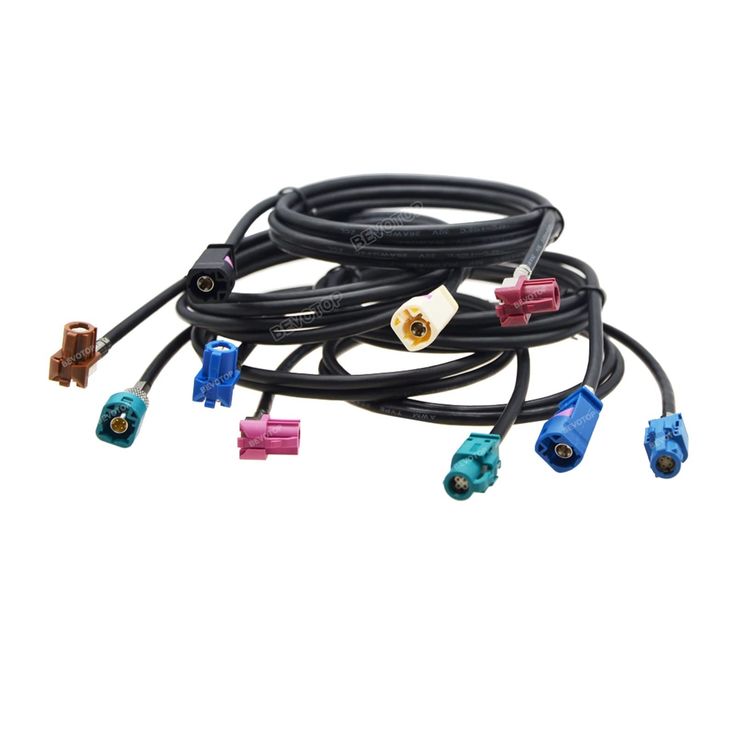Introduction
Wire harnesses, also known as cable assemblies or wiring looms, are essential components in various industries, including automotive, aerospace, electronics, and telecommunications. They simplify the installation process, improve safety, and protect wires from wear and environmental damage. This document covers the key aspects of wire harness design and manufacturing, including best practices, materials, tools, and quality control measures.
1. Design Process
1.1 Requirements Gathering
The first step in wire harness design is understanding the project requirements. This includes:
- Electrical requirements: Voltage, current, and signal type.
- Environmental conditions: Temperature, humidity, vibration, and exposure to chemicals.
- Physical constraints: Space limitations, routing paths, and connector types.
- Compliance standards: Industry-specific standards such as ISO, UL, or MIL-specs.
1.2 Creating a Schematic
Designers use software tools like AutoCAD Electrical, SolidWorks Electrical, or Altium Designer to create schematics that map out the electrical connections and routing paths. This schematic includes:
- Wire types and sizes
- Connectors and terminals
- Protective coverings (e.g., tubing, sleeves, and heat shrink)
- Labels and identification markers
1.3 Wire Length Calculation and Routing
Accurate wire length calculations are essential to ensure proper fit and function. Designers must consider:
- Bends and twists in the routing path
- Allowance for movement and strain relief
- Space constraints in the final installation
2. Materials and Components
2.1 Wires and Cables
The selection of wires and cables depends on the application’s electrical and environmental requirements. Common types include:
- Single-core wires
- Multi-core cables
- Coaxial cables
- Shielded and unshielded cables
2.2 Connectors and Terminals
Connectors and terminals ensure secure connections between different components. They are selected based on:
- Pin count and configuration
- Current and voltage ratings
- Environmental protection (e.g., IP ratings)
- Ease of assembly and maintenance
2.3 Protective Coverings
Protective coverings are essential to safeguard the wire harness from environmental damage and mechanical wear. Common types include:
- Convoluted tubing
- Braided sleeves
- Heat shrink tubing
- PVC and silicone wraps
3. Manufacturing Process
3.1 Wire Cutting and Stripping
Automated machines are typically used to cut wires to the required lengths and strip the insulation from the ends. Precision in this step is crucial to avoid damaging the wire core.
3.2 Crimping and Soldering
Terminals and connectors are attached to wires through crimping or soldering:
- Crimping: A mechanical process that compresses the terminal onto the wire for a secure connection.
- Soldering: Uses molten metal to form a strong bond between the wire and terminal.
3.3 Assembly
The wires, connectors, and protective coverings are assembled according to the design schematic. This may involve:
- Routing wires through protective tubing
- Bundling wires with ties or wraps
- Securing connectors and terminals
3.4 Testing and Quality Control
Quality control is essential to ensure the wire harness meets the required specifications. Testing methods include:
- Continuity testing: Ensures all electrical connections are complete.
- Hi-pot testing: Checks for insulation breakdown under high voltage.
- Pull testing: Verifies the mechanical strength of crimped connections.
4. Quality Control and Compliance
4.1 Industry Standards
Wire harnesses must meet various industry standards, depending on the application:
- ISO 9001: Quality management system
- IPC/WHMA-A-620: Standards for cable and wire harness assemblies
- UL Certification: Safety certification for electrical components
- MIL-Specs: Military specifications for defense applications
4.2 Documentation
Proper documentation ensures traceability and compliance. Essential documents include:
- Bill of Materials (BOM)
- Assembly drawings
- Test reports
5. Best Practices
- Use standardized components: Reduces costs and simplifies maintenance.
- Implement strain relief: Prevents damage from movement or vibration.
- Label wires and connectors: Simplifies troubleshooting and maintenance.
- Ensure proper grounding and shielding: Reduces electromagnetic interference (EMI).
- Design for manufacturability: Simplifies the assembly process and reduces production costs.
6. Challenges and Solutions
| Challenge | Solution |
|---|---|
| Limited space for routing | Use flexible wires and compact connectors |
| Environmental exposure | Use appropriate protective coverings |
| High current requirements | Select wires and connectors with higher ratings |
| Complex designs | Use automated design and manufacturing tools |
7. Conclusion
Wire harnesses design are critical to the functionality of modern electronic and mechanical systems. A well-designed and manufactured wire harness ensures reliability, safety, and ease of maintenance. By following best practices and adhering to industry standards, manufacturers can produce high-quality wire harnesses that meet the needs of various applications.


Comments are closed